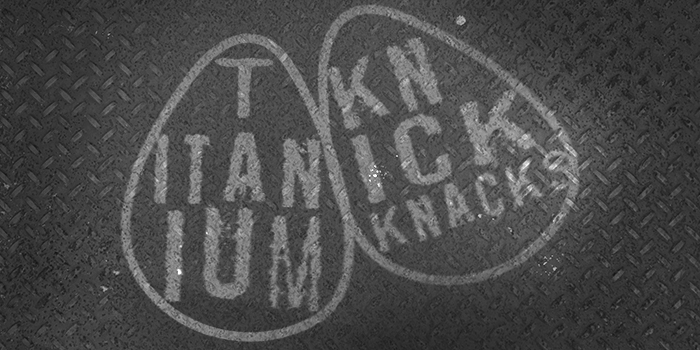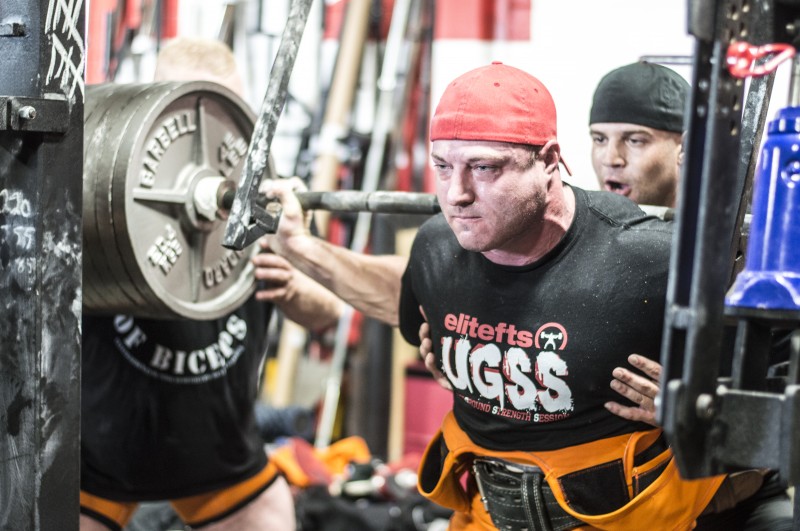
On Saturday, September 10, 2016, Jim Wendler delivered a speech at the first ever Open UGSS that will stick with me forever. Why this speech was so valuable can be attributed to many reasons — solid insight on Jim's training philosophies, outlook on life, training tactics, etc. However, one portion of his speech sticks out the most:
"Yeah, nutrition is important but nothing will EVER take the place of fucking balls. Nothing. Zero. You can have all the bullshit you want but if you've got fuckin' titanium knick-knacks, I don't care who you are, I don't care what kind of bullshit you're preachin'. Titanium knick-knacks are everything."
You read that right. Titanium Knick-Knacks are everything. Jim isn't just trying to sound hardcore, either; he's right. Think about it.
Besides (of course) physical limitations, what is the key factor in nailing a deadlifting in a meet? Aggression.
What about benching or squatting a PR? The nerve to get under the bar.
You cannot name a single sport where a variation of aggression does not come into play. It simply cannot be done. So naturally, I wanted to learn more about aggression, and I found some disturbing results.
I intended to write this article explaining the basic scientific findings related to aggression in sports. However, I was alarmed to discover that, in general, aggression is cast in a negative light. The very first scientific journal I read advocated for measures to be taken to reduce aggression in sports.
Excuse me? Do you think Simone Biles invented her own insane signature flip because she wanted to be nice and take home a runner-up medal? No. She wanted to crush the hopes and dreams of opposing competitors and rightfully take that gold medal back to the US of A.
So let's make one thing very clear before I get into it: I am referring to a specific type of aggression, known as Instrumental Aggression. Instrumental aggression is a beautiful thing. It often influences first and second place, that job you applied for, and sometimes life and death. Aggression isn't fair, and that's the way it's supposed to be.
Where Does It Come From?
From a very basic level, the leading theory on the origin of aggression is that it comes from the brain's "fight or flight" center, known as the amygdala. The amygdala is responsible for interpreting danger and emotional arousal.
Can It Be Taught or Learned?
This question was posed during the seminar, and as much as we love to romanticize aggression as an innate trait possessed by an elite few, that simply isn't accurate. The answer is yes, it can be learned.
A classic example of this is from the famous Bobo Doll Experiment. To set the scene: A young child was put in a room to play with toys. On the opposite end of the room was an inflatable punching doll. In one condition, an adult was brought in to play with toys quietly on the other side of the room. In the second condition, the adult physically attacked the doll. The children in both conditions then had their toys taken away and were instructed to play with other toys. Naturally, the children who witnessed and "learned" aggression physically attacked the inflatable doll, while the ones not exposed did not. (Russel, 2008)
RECENT: 17 Triggers to Induce Flow
Surges in norepinephrine throughout the amygdala during times of emotional response can facilitate strong and long-lasting memories. (Tully, 2007) Have you ever heard a certain song outside of the gym that you normally hear while training, only to feel energized, focused, or angry? You have conditioned your brain to respond to that sound by inducing physiological response.
Aggression in sports can be taught or learned, but it must be cultivated. Exposing athletes to proper forms of instrumental aggression ensures learning and memory for the future, and therein lies the other requirement: experience. To fully earn your pair of Titanium Knick-Knacks, you'll have to walk the walk too.
What does that mean for me?
If you seek to add a healthy amount of aggression to the way you approach your sport of choice, the biggest thing to keep in mind is that it starts with how YOU start. Be aggressive with the little things — tightening your belt, breathing, or even looking at the bar with a menacing look works to build up aggression on the arousal curve. Do everything leading up to your performance with a sense of deliberateness. Be confident in your actions, regardless of whether or not you are ultimately uncertain of your ability. Fake it til you make it, if you will.
However, also be aware that too much aggression can throw you over the arousal curve and inhibit performance greatly. Getting too amped can lead to either technical breakdown, fear, or sometimes both. The secret is this: Titanium Knick-Knacks are comprised of 50% confidence and 50% technique.
References
- Russell, G. W. (2008). Aggression in the Sports World. 222. doi:10.1093/acprof:oso/9780195189599.001.0001
- Tully, K., Li, Y., Tsvetkov, E., & Bolshakov, V. Y. (2007). Norepinephrine enables the induction of associative long-term potentiation at thalamo-amygdala synapses. Proceedings of the National Academy of Sciences, 104(35), 14146-14150. doi:10.1073/pnas.0704621104











1 Comment